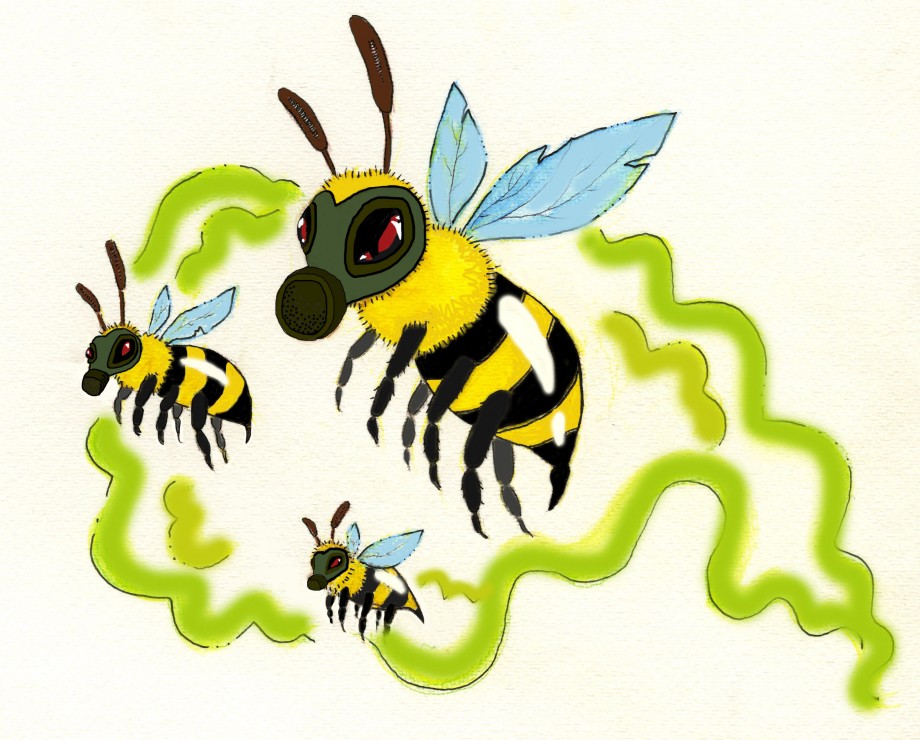On Feb. 21, Health Canada was supposed to decide on imposing a phase-out of a neonicotinoid insecticide — imidacloprid — because of its threat to insects and wetland ecosystems. The consultation period was then extended to March 23.
Traditionally, the use of imidacloprid has been framed as one of the factors contributing to the global decline of bee populations.
In November of last year, Health Canada declared that imidacloprid levels were unacceptably high near agricultural lands, and that exposure to the insecticide was harmful to aquatic insects, soil dwelling organisms, birds, and small animals.
The European Union imposed a partial ban on neonicotinoids (neonics) in 2013, while in Canada, the global bee decline has mobilized some provinces to take similar action. Ontario and Quebec are already regulating neonicotinoids, and the cities of Vancouver and Montreal have voted for a complete ban.
While the use of neonics has been linked to the dying off of bees, conclusive evidence is hard to find. Still, they remain the buzz topic in most discussions on the subject. Health Canada’s proposed ban is shifting away from this focus by looking at the larger picture.
The nation-wide ban should involve a three- or five-year phase-out period, depending on whether producers have access to ‘alternative methods’ of pest control.
What is a neonicotinoid?
Royal Dutch Shell and chemical and pharmaceutical company Bayer AG began developing neonics in the 1980s. These insecticides bind and block receptors of the nervous system in insects, paralyzing their victim and sending them into a seizure of death.
In Canada, they are used on corn and canola fields — and increasingly on soy fields, though direct benefits on soy crops are highly contested in academic circles.
Of the seven existing neonics, imidacloprid is the most widely used. The proposed ban would also review thiamethoxam and clothianidin, the second and third most commonly used neonics on the market. Neonics have been linked to bee die off in Ontario and Quebec, but for now, a full ban is not on the table.
There are compound factors to consider regarding these insecticides: aquatic invertebrates, human health, and the overall surrounding environment are all negatively impacted by the use of neonics. In 2014, an independent review of more than 1 100 peer reviewed scientific articles concluded neonics pose an unacceptable risk to biodiversity. The toxic runoff accumulates in ground-soil and contributes to bio-magnification, which is detrimental to fish and birds in riparian habitats. Mayflies, midges, earthworms, and pollinators — all indicators of healthy ecozones — are also at risk.
The European partial ban on neonics
The European Food Safety Authority (EFSA) was scheduled to release a review of the 2013 ban in January of 2017, but it has yet to be released. For whatever reason, no environmental assessment system was put in place, so it’s hard to say to what degree it has impacted bee populations, the soil, or aquatic invertebrates.
There is, however, no shortage of research on to what degree the ban has negatively impacted farmers. One estimate says U.K farmers, forced to use alternative chemicals, unnecessarily spent $33 million in extra costs.
Research on the degree to which bees are directly affected by neonics is highly disputed — as of 2016, Health Canada released a review concluding imidacloprid was “not a substantial risk to bees,” clashing with independent studies published in the scientific journal Nature between 2014 and 2015.
Alternatives come with their own problems
If neonics are banned, alternatives include spray and granular pesticides, which are less effective, and when compounded are actually more harmful to the overall environment.
Economically speaking, the Conference Board of Canada estimates a total ban on neonics in Ontario would cost corn and soybean farmers as much as $630 million per year in the province alone. This would surely play out similarly in the rest of Canada, as has been demonstrated in the U.K.
Then again, some entomologists argue that only 10 per cent of Canadian corn and soy fields are at risk of pest attack anyways. This means it would be more cost effective to not administer neonics to every given seed.
Alternatively, integrated pest management has proposed more holistic strategies including crop rotation, using natural enemies, and applying pest control based on actual need.
An ongoing battle
So far, major environmental groups strongly support the motion to ban neonicotinoids. Minister of Health Jane Philpott has promised to make a science-based decision, which is largely against imidacloprid use.
If the ban does come into place, however, an environmental monitoring program needs to be implemented and monitored in order to assess its implications on biodiversity levels. In the end, most countries are fighting for the same thing: a cost-effective, efficient, and sustainable way of keeping pests under control.
Considering that public opinion has subscribed to the bee plight (a petition to ban neonics by the David Suzuki Foundation, at time of writing, has 13 831 supporters), Canada’s Pest Management Regulatory Agency is faced with two choices: to implement a neonics ban, or to wait for greater scientific consensus in an effort to postpone the inevitable harm incurred to farmers.









